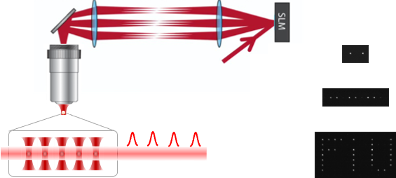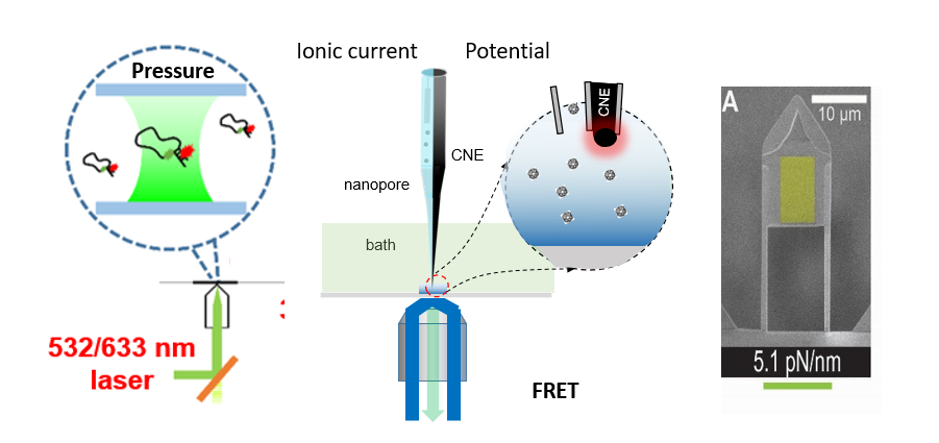Atomic, Molecular, and Optical (AMO) physics studies atoms and their constituents, molecules, and light at the quantum level. As a cornerstone for modern science and technologies, AMO physics plays a crucial role in the emerging field of quantum information science and technology, as pointed out by a recent report by the National Academies of Sciences, Engineering, and Medicine. The proposed research in this project will contribute to advancing AMO physics in two research thrusts: (1) Ultrafast spectroscopy and manipulation of quantum states in ultra-cold atom arrays, and (2) single-molecule biophysics.
Ultrafast spectroscopy and manipulation of quantum states in ultra-cold atom arrays

Neutral atoms trapped in an array of optical tweezers have recently attracted great interest and have many intriguing applications such as quantum simulators, optical atomic clocks, and cold molecules. An important aspect in these applications is the many-body effects due to interacting atoms in the system. Experimentally confirmed understanding of many-body effects atom arrays is essential for the implementation of these atom-based quantum applications. At the same time, an atom array provides an ideal platform for studying many-body physics since the number of atoms and their spatial distribution can be precisely controlled. In this thrust, we will use ultrafast spectroscopy to study many-body effects including interactions, correlations, and collective effects in atom arrays for applications in fundamental many-body physics and quantum technologies. We will also explore the possibility of ultrafast manipulation of quantum states in atom arrays by using femtosecond pulses.
Single-molecule biophysics

In this single-molecule biophysics thrust, we will study folding kinetics and dynamics of biomolecules and the delivery and detection of biomolecules in living cells. To achieve the goal, we will develop state-of-the-art single-molecule imaging and measurement techniques including confocal and total internal reflection microscopy with controllable temperature and pressure, the integration of nanopipette-based electrochemical single-entity techniques with the single-molecule fluorescence techniques, the atomic force microscopy-based high-precision single-molecule force techniques. We will also carry out extensive molecular dynamics simulations to interpret the experimental results.